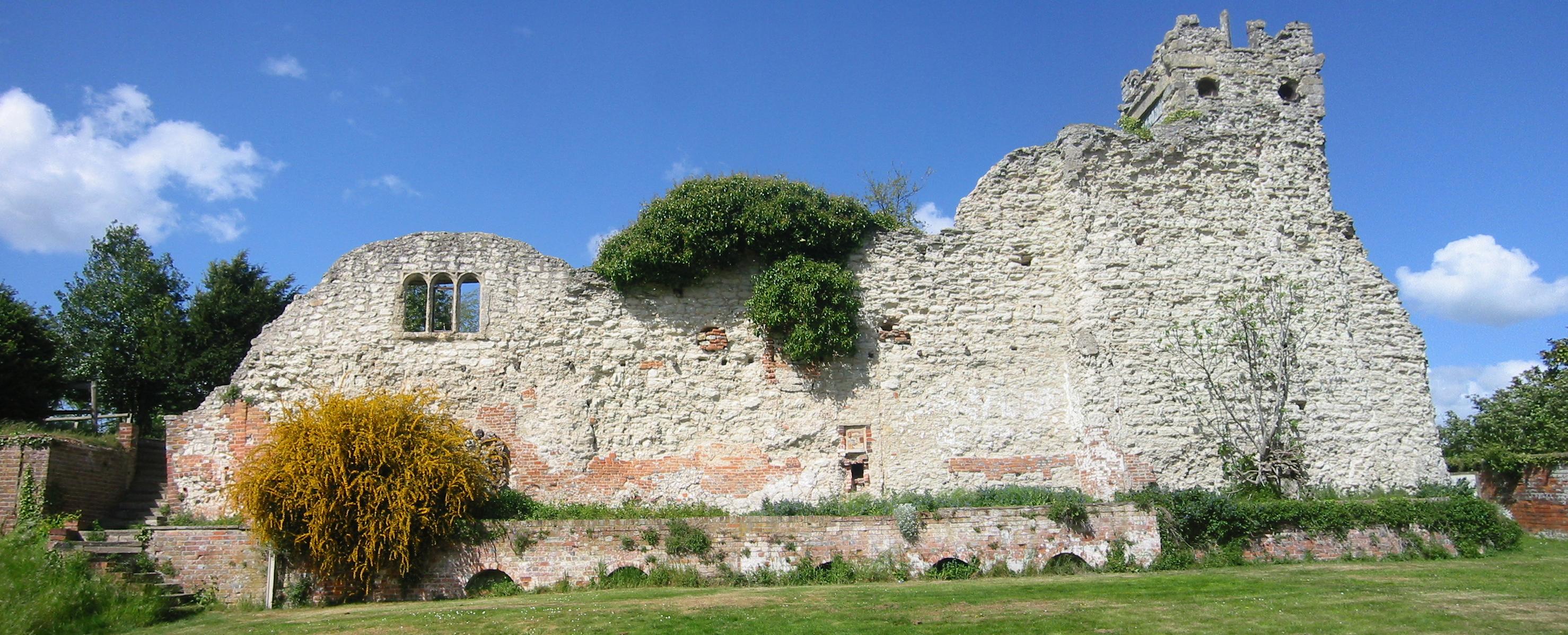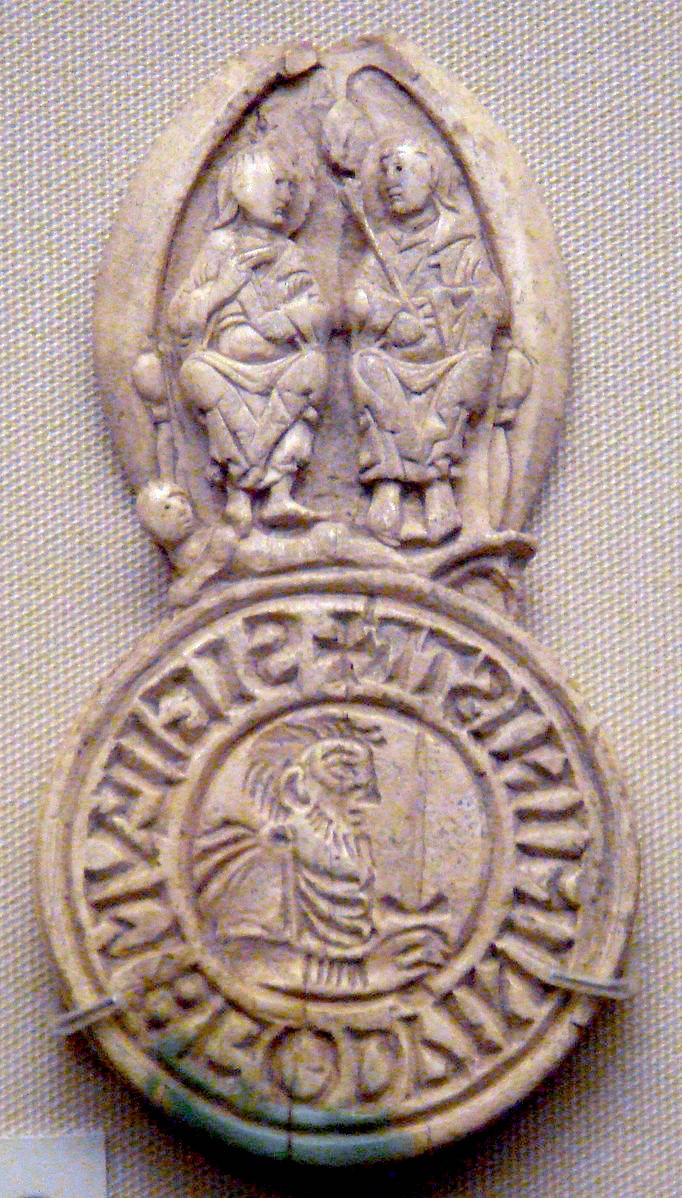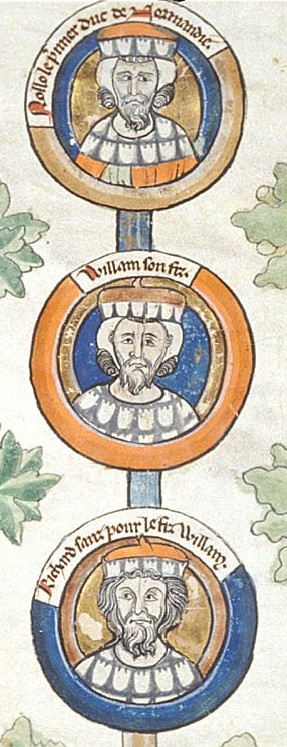|
Wigod
Wigod (also spelt Wigot) was the eleventh-century Saxon thegn or lord of the English town of Wallingford, and a kinsman of Edward the Confessor Edward the Confessor ; la, Eduardus Confessor , ; ( 1003 – 5 January 1066) was one of the last Anglo-Saxon English kings. Usually considered the last king of the House of Wessex, he ruled from 1042 to 1066. Edward was the son of Æth .... After the Battle of Hastings, during the 1066 Norman invasion of England, William the Conqueror made for London, but was repulsed at the River Thames. Wigod invited William to Wallingford where he then crossed the river, aiding him in his conquest of England. The Domesday Book records him as both a Lord and an Overlord in a number of places in 1066. His daughter Ealdgyth married Robert D'Oyly, one of William's lords. He became lord of Wallingford upon Wigod's death. Wigod's son, Tokig, or Toking, died in battle supporting William the Conqueror. References External links * ... [...More Info...] [...Related Items...] OR: [Wikipedia] [Google] [Baidu] |
Ealdgyth Of Wallingford
Robert D'Oyly (also spelt Robert D'Oyley de Liseaux, Robert Doyley, Robert de Oiley, Robèrt d'Oilly, Robert D'Oyley and Roberti De Oilgi) was a Norman nobleman who accompanied William the Conqueror on the Norman conquest, his invasion of England. He died in 1091. Background Robert was the son of Walter D'Oyly and elder brother to Nigel D'Oyly. D'Oyly is a Norman French name, from the place name Ouilly near Lisieux in pays d'Auge, present Calvados ''département'' in Normandy. He married Ealdgyth, the daughter of Wigod, the Saxon lord of Wallingford. After Wigod's death, William appointed Robert the lord of Wallingford, and ordered him to fortify Wallingford Castle between 1067 and 1071. It is believed he may have become the third High Sheriff of Berkshire around this time. He was made Baron Hocknorton. D'Oyly was a sworn brother-in-arms of Roger d'Ivry. The Domesday Book records that by 1086 D'Oyly and d'Ivry held a number of manors either partitioned between the two of the ... [...More Info...] [...Related Items...] OR: [Wikipedia] [Google] [Baidu] |
Robert D'Oyly
Robert D'Oyly (also spelt Robert D'Oyley de Liseaux, Robert Doyley, Robert de Oiley, Robèrt d'Oilly, Robert D'Oyley and Roberti De Oilgi) was a Norman nobleman who accompanied William the Conqueror on the Norman conquest, his invasion of England. He died in 1091. Background Robert was the son of Walter D'Oyly and elder brother to Nigel D'Oyly. D'Oyly is a Norman French name, from the place name Ouilly near Lisieux in pays d'Auge, present Calvados ''département'' in Normandy. He married Ealdgyth, the daughter of Wigod, the Saxon lord of Wallingford. After Wigod's death, William appointed Robert the lord of Wallingford, and ordered him to fortify Wallingford Castle between 1067 and 1071. It is believed he may have become the third High Sheriff of Berkshire around this time. He was made Baron Hocknorton. D'Oyly was a sworn brother-in-arms of Roger d'Ivry. The Domesday Book records that by 1086 D'Oyly and d'Ivry held a number of manors either partitioned between the two o ... [...More Info...] [...Related Items...] OR: [Wikipedia] [Google] [Baidu] |
Wallingford, Oxfordshire
Wallingford () is a historic market town and civil parish located between Oxford and Reading on the River Thames in England. Although belonging to the historic county of Berkshire, it is within the ceremonial county of Oxfordshire for administrative purposes (since 1974) as a result of the 1972 Local Government Act. Wallingford is north of Reading, south of Oxford and north west of Henley-on-Thames. The town's population was 11,600 in the 2011 census. The town has played an important role in English history starting with the surrender of Stigand to William the Conqueror in 1066, which led to his taking the throne and the creation of Wallingford Castle. The castle and the town enjoyed royal status and flourished for much of the Middle Ages. The Treaty of Wallingford, which ended a civil war known as The Anarchy between King Stephen and Empress Matilda, was signed there. The town then entered a period of decline after the arrival of the Black Death and falling out of f ... [...More Info...] [...Related Items...] OR: [Wikipedia] [Google] [Baidu] |
William The Conqueror
William I; ang, WillelmI (Bates ''William the Conqueror'' p. 33– 9 September 1087), usually known as William the Conqueror and sometimes William the Bastard, was the first Norman king of England The monarchy of the United Kingdom, commonly referred to as the British monarchy, is the constitutional form of government by which a hereditary sovereign reigns as the head of state of the United Kingdom, the Crown Dependencies (the Bailiw ..., reigning from 1066 until his death in 1087. A descendant of Rollo, he was Duke of Normandy from 1035 onward. By 1060, following a long struggle to establish his throne, his hold on Normandy was secure. In 1066, following the death of Edward the Confessor, William invaded England, leading an army of Normans to victory over the Anglo-Saxons, Anglo-Saxon forces of Harold Godwinson at the Battle of Hastings, and suppressed subsequent English revolts in what has become known as the Norman Conquest. The rest of his life was marked by str ... [...More Info...] [...Related Items...] OR: [Wikipedia] [Google] [Baidu] |
Burning Of Southwark
The Burning of Southwark was a battle fought in Southwark during the Norman Conquest of England in October 1066. The Norman soldiers of William, Duke of Normandy fought with Anglo-Saxon soldiers in Southwark for control of London Bridge, crossing the River Thames to the English capital London. The Normans defeated the Anglo-Saxons in the battle but withdrew from Southwark due to strong local resistance, setting fire to the town during their retreat to spread terror. Southwark was destroyed and William marched westwards and cut off Anglo-Saxon supply routes to London which led to the city submitting to his rule. Background William, Duke of Normandy had launched his invasion of the Kingdom of England in late September 1066, declaring his claim to the English throne following the death of the childless Anglo-Saxon King Edward the Confessor, the son of his great-aunt Emma of Normandy. Edward's death in January 1066 saw his brother-in-law Harold Godwinson proclaimed king b ... [...More Info...] [...Related Items...] OR: [Wikipedia] [Google] [Baidu] |
Anglo-Saxons
The Anglo-Saxons were a cultural group who inhabited England in the Early Middle Ages. They traced their origins to settlers who came to Britain from mainland Europe in the 5th century. However, the ethnogenesis of the Anglo-Saxons happened within Britain, and the identity was not merely imported. Anglo-Saxon identity arose from interaction between incoming groups from several Germanic tribes, both amongst themselves, and with indigenous Britons. Many of the natives, over time, adopted Anglo-Saxon culture and language and were assimilated. The Anglo-Saxons established the concept, and the Kingdom, of England, and though the modern English language owes somewhat less than 26% of its words to their language, this includes the vast majority of words used in everyday speech. Historically, the Anglo-Saxon period denotes the period in Britain between about 450 and 1066, after their initial settlement and up until the Norman Conquest. Higham, Nicholas J., and Martin J. Ryan. ''The An ... [...More Info...] [...Related Items...] OR: [Wikipedia] [Google] [Baidu] |
Thegn
In Anglo-Saxon England, thegns were aristocratic landowners of the second rank, below the ealdormen who governed large areas of England. The term was also used in early medieval Scandinavia for a class of retainers. In medieval Scotland, there were local officials known as thanes. Etymology The Old English (, "man, attendant, retainer") is cognate with Old High German and Old Norse ("thane, franklin, freeman, man"). The thegn had a military significance, and its usual Latin translation was , meaning soldier, although was often used. '' An Anglo-Saxon Dictionary'' describes a thegn as "one engaged in a king's or a queen's service, whether in the household or in the country". It adds: "the word ... seems gradually to acquire a technical meaning, ... denoting a class, containing several degrees", but what remained consistent throughout was its association with military service. Origins The precursor of thegn was the ''gesith'', the companion of the king or great ... [...More Info...] [...Related Items...] OR: [Wikipedia] [Google] [Baidu] |
Edward The Confessor
Edward the Confessor ; la, Eduardus Confessor , ; ( 1003 – 5 January 1066) was one of the last Anglo-Saxon English kings. Usually considered the last king of the House of Wessex, he ruled from 1042 to 1066. Edward was the son of Æthelred the Unready and Emma of Normandy. He succeeded Cnut the Great's son – and his own half-brother – Harthacnut. He restored the rule of the House of Wessex after the period of Danish rule since Cnut conquered England in 1016. When Edward died in 1066, he was succeeded by his wife's brother Harold Godwinson, who was defeated and killed in the same year by the Normans under William the Conqueror at the Battle of Hastings. Edward's young great-nephew Edgar the Ætheling of the House of Wessex was proclaimed king after the Battle of Hastings in 1066 but was never crowned and was peacefully deposed after about eight weeks. Historians disagree about Edward's fairly long 24-year reign. His nickname reflects the traditional ... [...More Info...] [...Related Items...] OR: [Wikipedia] [Google] [Baidu] |
Battle Of Hastings
The Battle of Hastings nrf, Batâle dé Hastings was fought on 14 October 1066 between the Norman-French army of William, the Duke of Normandy, and an English army under the Anglo-Saxon King Harold Godwinson, beginning the Norman Conquest of England. It took place approximately northwest of Hastings, close to the present-day town of Battle, East Sussex, and was a decisive Norman victory. The background to the battle was the death of the childless King Edward the Confessor in January 1066, which set up a succession struggle between several claimants to his throne. Harold was crowned king shortly after Edward's death, but faced invasions by William, his own brother Tostig, and the Norwegian King Harald Hardrada (Harold III of Norway). Hardrada and Tostig defeated a hastily gathered army of Englishmen at the Battle of Fulford on 20 September 1066, and were in turn defeated by Harold at the Battle of Stamford Bridge five days later. The deaths of Tostig and Hardrada at ... [...More Info...] [...Related Items...] OR: [Wikipedia] [Google] [Baidu] |
Norman Conquest Of England
The Norman Conquest (or the Conquest) was the 11th-century invasion and occupation of England by an army made up of thousands of Norman, Breton, Flemish, and French troops, all led by the Duke of Normandy, later styled William the Conqueror. William's claim to the English throne derived from his familial relationship with the childless Anglo-Saxon king Edward the Confessor, who may have encouraged William's hopes for the throne. Edward died in January 1066 and was succeeded by his brother-in-law Harold Godwinson. The Norwegian king Harald Hardrada invaded northern England in September 1066 and was victorious at the Battle of Fulford on 20 September, but Godwinson's army defeated and killed Hardrada at the Battle of Stamford Bridge on 25 September. Three days later on 28 September, William's invasion force of thousands of men and hundreds of ships landed at Pevensey in Sussex in southern England. Harold marched south to oppose him, leaving a significant portion of h ... [...More Info...] [...Related Items...] OR: [Wikipedia] [Google] [Baidu] |
England
England is a country that is part of the United Kingdom. It shares land borders with Wales to its west and Scotland to its north. The Irish Sea lies northwest and the Celtic Sea to the southwest. It is separated from continental Europe by the North Sea to the east and the English Channel to the south. The country covers five-eighths of the island of Great Britain, which lies in the North Atlantic, and includes over 100 smaller islands, such as the Isles of Scilly and the Isle of Wight. The area now called England was first inhabited by modern humans during the Upper Paleolithic period, but takes its name from the Angles, a Germanic tribe deriving its name from the Anglia peninsula, who settled during the 5th and 6th centuries. England became a unified state in the 10th century and has had a significant cultural and legal impact on the wider world since the Age of Discovery, which began during the 15th century. The English language, the Anglican Church, and Eng ... [...More Info...] [...Related Items...] OR: [Wikipedia] [Google] [Baidu] |
London
London is the capital and List of urban areas in the United Kingdom, largest city of England and the United Kingdom, with a population of just under 9 million. It stands on the River Thames in south-east England at the head of a estuary down to the North Sea, and has been a major settlement for two millennia. The City of London, its ancient core and financial centre, was founded by the Roman Empire, Romans as ''Londinium'' and retains its medieval boundaries.See also: Independent city#National capitals, Independent city § National capitals The City of Westminster, to the west of the City of London, has for centuries hosted the national Government of the United Kingdom, government and Parliament of the United Kingdom, parliament. Since the 19th century, the name "London" has also referred to the metropolis around this core, historically split between the Counties of England, counties of Middlesex, Essex, Surrey, Kent, and Hertfordshire, which largely comprises Greater London ... [...More Info...] [...Related Items...] OR: [Wikipedia] [Google] [Baidu] |







